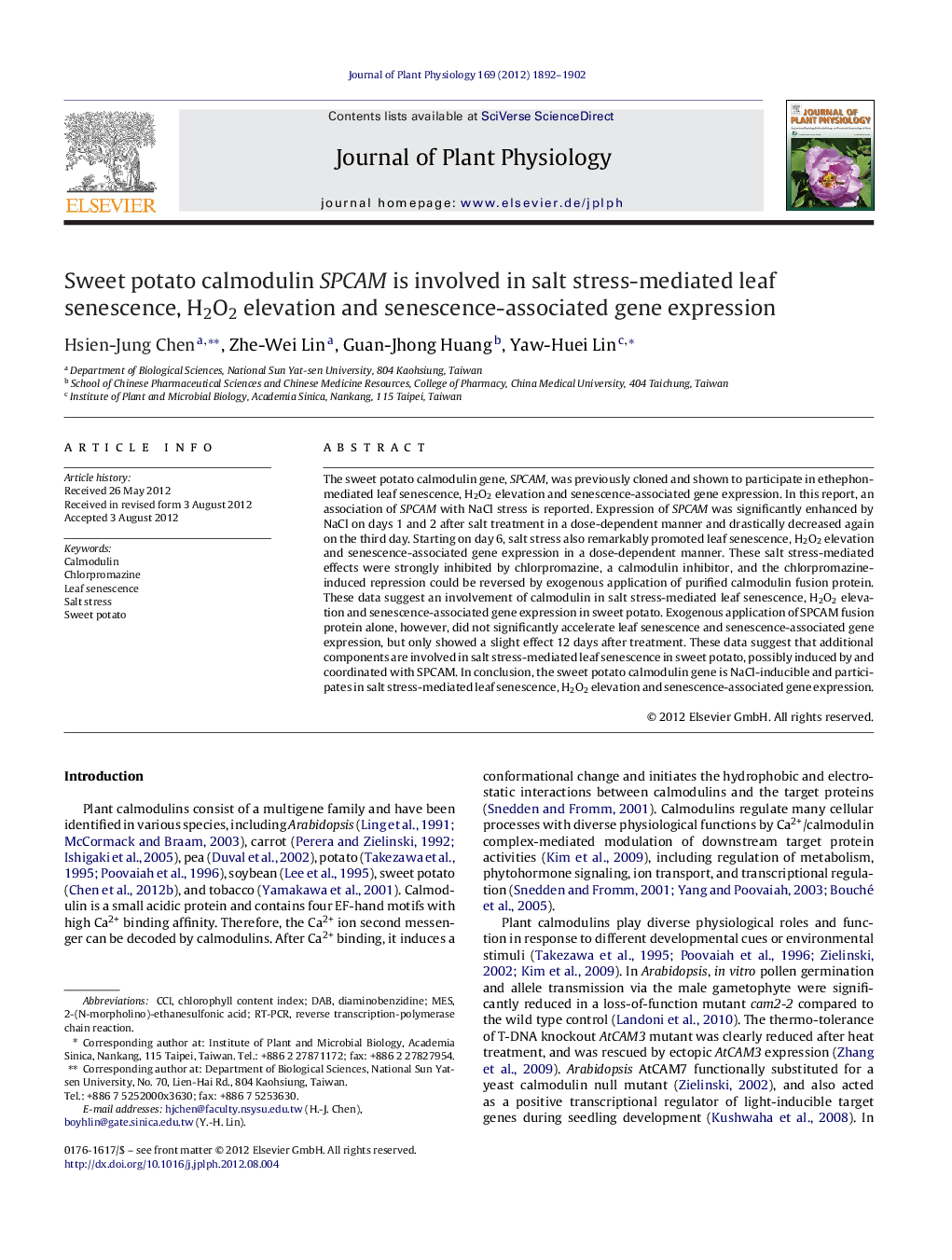| Article ID | Journal | Published Year | Pages | File Type |
|---|---|---|---|---|
| 2056290 | Journal of Plant Physiology | 2012 | 11 Pages |
The sweet potato calmodulin gene, SPCAM, was previously cloned and shown to participate in ethephon-mediated leaf senescence, H2O2 elevation and senescence-associated gene expression. In this report, an association of SPCAM with NaCl stress is reported. Expression of SPCAM was significantly enhanced by NaCl on days 1 and 2 after salt treatment in a dose-dependent manner and drastically decreased again on the third day. Starting on day 6, salt stress also remarkably promoted leaf senescence, H2O2 elevation and senescence-associated gene expression in a dose-dependent manner. These salt stress-mediated effects were strongly inhibited by chlorpromazine, a calmodulin inhibitor, and the chlorpromazine-induced repression could be reversed by exogenous application of purified calmodulin fusion protein. These data suggest an involvement of calmodulin in salt stress-mediated leaf senescence, H2O2 elevation and senescence-associated gene expression in sweet potato. Exogenous application of SPCAM fusion protein alone, however, did not significantly accelerate leaf senescence and senescence-associated gene expression, but only showed a slight effect 12 days after treatment. These data suggest that additional components are involved in salt stress-mediated leaf senescence in sweet potato, possibly induced by and coordinated with SPCAM. In conclusion, the sweet potato calmodulin gene is NaCl-inducible and participates in salt stress-mediated leaf senescence, H2O2 elevation and senescence-associated gene expression.
